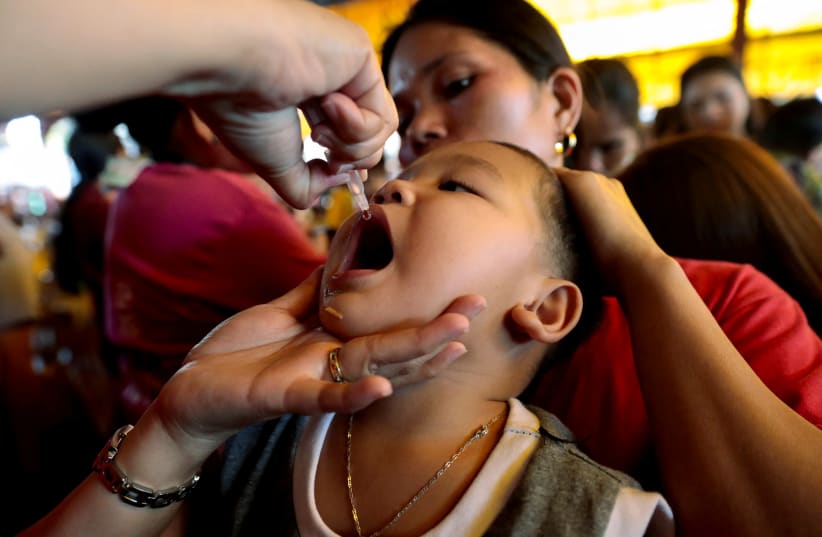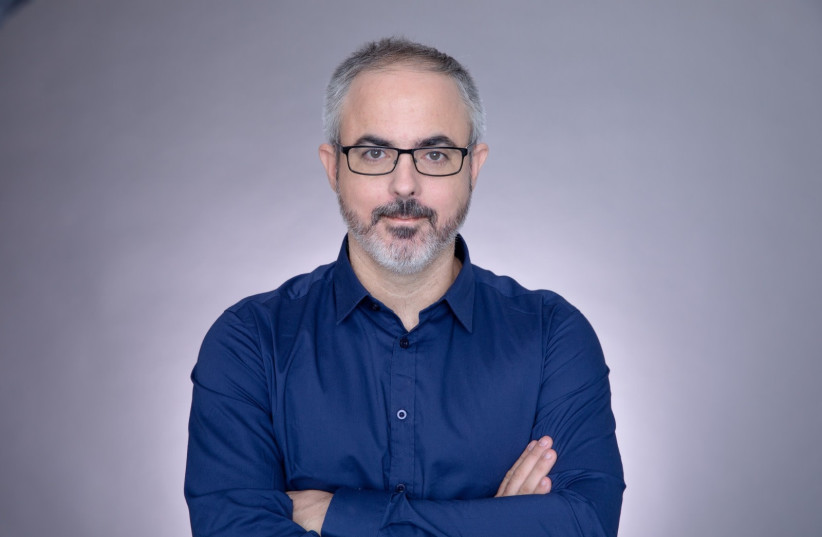The world assumed that with the availability of two successful types of vaccinations against poliomyelitis for many decades, it would be wiped out – but polio hasn’t been because of anti-vaccination sentiments, which were bolstered by the COVID-19 pandemic that required numerous shots to prevent serious disease. There are 150,000 Israeli children who have not been vaccinated against polio at all, according to the Health Ministry.
On Tuesday, the Health Ministry announced that a child from the Safed region in the Galilee arrived at Ziv Medical Center with limb weakness; after an inquiry at the National Virus Laboratory, the sample was found to be positive for the poliovirus. The ministry says that the main way to protect children from paralysis is through an inactivated polio vaccine. To prevent transmission of the virus, it is also important to maintain hand hygiene.
The Northern District Health Bureau will open an epidemiological investigation and contact close contacts of the child to provide specific instructions. According to the findings of the investigation, a decision will be made on additional recommendations, and the ministry will continue to monitor the situation and update its findings.
How dangerous is polio?
Dr. Erez Garty, an immunologist from the Davidson Institute for Science Education, told The Jerusalem Post in an interview that the poliovirus is dangerous and contagious and can damage the nervous system, causing paralysis and even death.
“The virus has an old, effective and safe vaccine that is given as part of the routine vaccinations for children. Called IPV (inactivated polio vaccine) and developed by the late American virologist Dr. Jonas Salk, it contains a killed inactivated virus that teaches our children’s immune system how to deal with the virus so that if they do become infected, the immune system will recognize and destroy the virus before it causes damage. Viruses in IPV are inactivated meaning the virus structures were maintained yet the virus cannot function.
“One can never say that a virus is ‘almost wiped out.’ If there are some cases, the infection can rebound,”
Erez Garty
“One can never say that a virus is ‘almost wiped out.’ If there are some cases, the infection can rebound,” Garty stressed. In Jerusalem about a year ago, a two-year-old toddler was also diagnosed with polio, and in the US, an unvaccinated adult suffered paralysis in June from polio, the first case in New York since 1990.
The virus is currently circulating in Israel, and thanks to the high vaccination rate, it does not cause harm until it meets an unprotected child. In Israel of 2023, there is no reason or justification for a child to have to be exposed to such a danger and deal alone with a wild virus that should have already been eradicated from the world.”
He added that “many Israelis still remember pictures from the 1950s depicting paralyzed children, and so many people felt afraid and frightened, and not without merit. On the other hand, the polio vaccine also attracted a wave of rumors about terrible side effects. Polio is caused by the poliomyelitis virus. It is transmitted between humans only and is mostly infectious through fecal matter and saliva. Three different types of viruses can infect the cells of the intestine and penetrate the bloodstream. In most cases, the disease goes away without any complications, but one in approximately one thousand cases, the virus hurts the nervous system, causing paralysis.”
This paralysis, said Garty, can be temporary, but sometimes it stays forever, leaving the patient with a lifelong disability. In severe cases, the paralysis causes respiratory failure due to paralysis of the respiratory muscles. Patients who have this condition need to be mechanically ventilated, once commonly performed using an “iron lung.”
The inactivated virus vaccine's efficacy after two doses is 90% and as high as 99% after three doses. This virus only presents the virus to the immune system, and so after receiving IPV, the immune response would only kick in if the virus penetrates the bloodstream. This means that people immunized with just IPV may be able to carry the viruses in their digestive systems for some time (up to several weeks) and infect other people without developing the disease themselves
The second vaccine, called OPV (oral polio vaccine), is a live-attenuated vaccine, meaning the viruses were treated in ways that significantly hamper their ability to infect human cells. This vaccine was developed by several groups, one of whom was led by Albert Sabin, who went on to become the president of the Weizmann Institute in over 50 years ago. This vaccine is taken orally, mimicking a small infection the immune system can handle easily. “A person immunized with OPV becomes a ‘carrier’ of the weakened polio virus for a few weeks and develops antibodies against it,” Garty explained. “The intestines of such a person become a very hostile environment for any form of the virus. The advantage of this vaccine is that it makes the body secrete antibodies into the intestinal lumen that destroy the virus population and prevent carrying the violent, wild virus or infecting others with it.”
Although OPV has the advantage of affecting the intestines, it suffers from several disadvantages compared with IPV. “First, it is simply less effective, with only 50% efficacy after the first dose, and going up to 95% only after the third dose. The second, more severe disadvantage is that approximately one in a million children who receive only the OPV might have an outbreak of the virus causing paralysis. This adverse effect is effectively prevented by prior vaccination with the IPV. A third disadvantage is that rarely, some immunocompromised children may carry the weakened virus without being harmed, but the carrier may be infectious for others, for a period as long as several months,” said the Davidson immunologist.
In practice, about 95% of children are immunized at a young age against polio with IPV, which protects them well against the adverse effects of OPV, so the probability of suffering from these adverse effects is practically zero. The other adverse effect, namely of carrying and spreading polio, is mitigated by herd immunity, meaning that even if one person is carrying polio in their digestive system, that person is surrounded by so many immune people that the chance of passing it on is extremely low.

